Tackling the formidable Mount Kilimanjaro via the Lemosho Route is a challenge that beckons adventurous spirits. This 8-day trek isn’t for the faint-hearted, but for those willing to embrace the thrill of conquering Africa’s highest peak. From lush forests to alpine meadows, hikers will be rewarded with stunning vistas and a sense of accomplishment that few experiences can match. With expert guides and porters by their side, climbers can focus on the journey, savoring each step as they ascend towards the summit’s breathtaking panorama. Whether a seasoned mountaineer or a first-time adventurer, the Lemosho Route promises an unforgettable expedition.
Good To Know
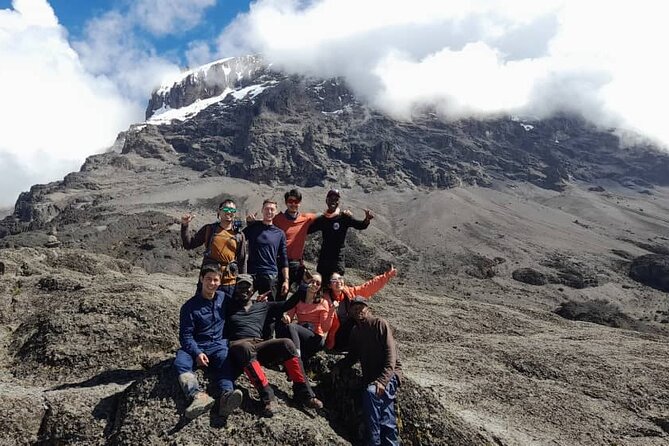
- The Lemosho route spans 8 days, offering a gradual and scenic trek with a higher probability of summit success due to the slower pace and better acclimatization.
- Proper preparation, including cardiovascular training and gear research, is essential for tackling the physical and environmental challenges of climbing Mount Kilimanjaro.
- Ample time for rest, recovery, and acclimation to the high altitude is crucial before and during the climb to ensure a safe and successful ascent.
- The trek showcases diverse landscapes, from lush forests to alpine meadows, with opportunities to spot wildlife like Colobus monkeys and, if lucky, elusive leopards.
- The final push to the summit is the most challenging, but the panoramic vistas from the crater rim at 19,341 feet reward climbers with a sense of accomplishment.
Preparing for the Climb
Climbing Mount Kilimanjaro requires thorough preparation. Prospective climbers should start training several months in advance, building up their endurance and strength through regular exercise.
Cardiovascular workouts like hiking, running, and cycling are essential, as is strength training to prepare for the grueling ascent. It’s also crucial to research the required gear and ensure you have the right clothing, footwear, and equipment.
Proper acclimation is key, so consider arriving in Tanzania a few days early to allow your body to adjust to the high altitude. Staying hydrated, eating a balanced diet, and getting enough rest are also vital for a successful climb.
With the right preparation, the Lemosho Route can be an unforgettable adventure.
You can also read our reviews of more tours and experiences in Moshi.
Arrival and Acclimatization

Arriving in Tanzania a few days before the climb allows climbers to acclimate to the high altitude gradually. This acclimatization process is crucial for a successful and safe ascent of Kilimanjaro.
During this time, climbers can:
- Rest and recover from the journey to Tanzania.
- Get fitted for their climbing gear and ensure it’s in good condition.
- Explore the local area and soak in the culture and scenery.
- Participate in light activities to help their bodies adjust to the lower oxygen levels.
Proper acclimatization can make a significant difference in a climber’s ability to reach the summit and return safely.
The Lemosho Route Ascent
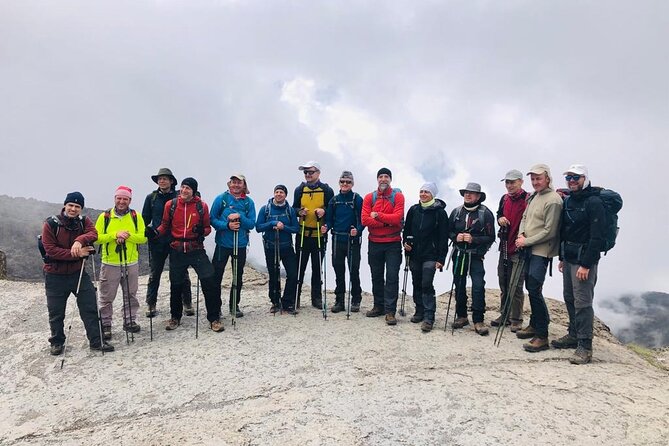
The Lemosho route ascent typically spans 8 days, providing climbers with a gradual and scenic trek up the western slopes of Mount Kilimanjaro.
This route offers a slower pace, allowing for better acclimatization and improved chances of reaching the summit.
Each day, the group will cover 4-7 hours of hiking through diverse landscapes, from lush rainforests to the lunar-like terrain of the volcanic rock.
Campsites are strategically positioned to maximize rest and recovery before the next day’s challenge.
With the support of experienced guides, porters, and cooks, climbers can focus on their personal journey, savoring the ever-changing vistas and the sense of accomplishment as they steadily approach the roof of Africa.
Stunning Scenery and Wildlife
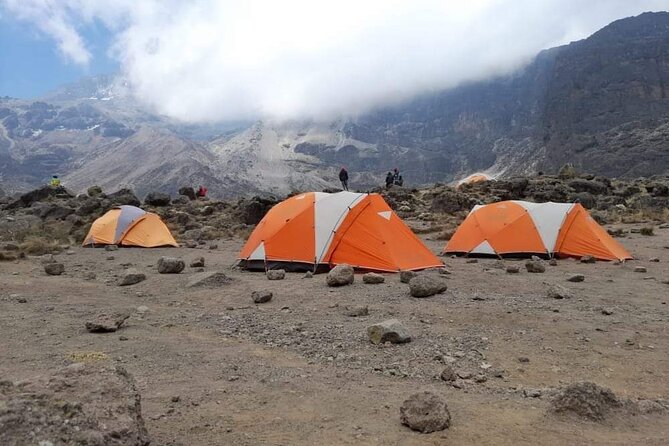
As climbers ascend the Lemosho route, they’re treated to a captivating visual feast. The landscape transforms from lush forests to stunning alpine meadows, with towering peaks and glaciers in the distance.
Along the way, hikers may spot:
- Colobus monkeys, with their distinctive black and white fur.
- Majestic African elephants grazing in the distance.
- The elusive leopard, prowling through the undergrowth.
- Vibrant wildflowers, adding splashes of color to the rugged terrain.
This varied and awe-inspiring scenery, combined with the opportunity to spot iconic African wildlife, makes the Lemosho route a truly unforgettable experience for adventurous trekkers.
Reaching the Summit
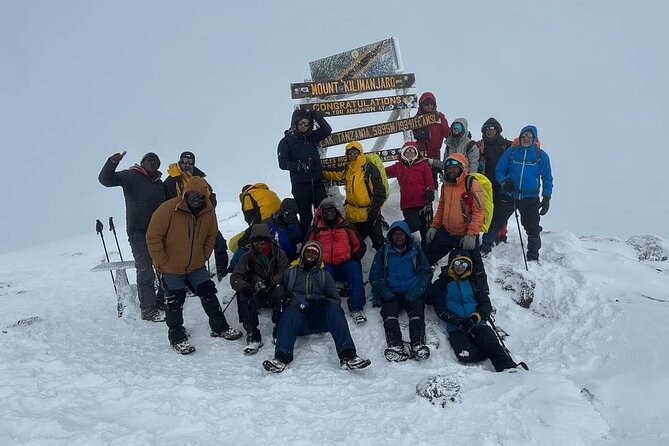
Atop the Lemosho route, climbers set their sights on the grand prize – the summit of Mount Kilimanjaro.
After days of grueling trekking, the final push to the top begins. The air grows thinner, the gradient steepens, and the climb becomes more challenging.
But with determination and the support of experienced guides, climbers push on, step by step. As they reach the crater rim, the panoramic vistas unfold before them, a reward for their hard-earned efforts.
The sense of accomplishment is palpable as they stand at the highest point in Africa, 19,341 feet above sea level.
For those who make it to the summit, the memories of this triumph will last a lifetime.
The Descent and Celebration
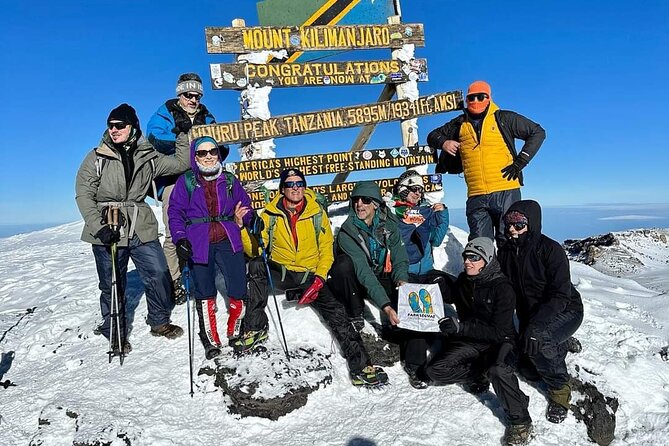
With the summit conquered, climbers now face the descent down Kilimanjaro’s slopes. The descent can be just as challenging as the ascent, requiring careful footing and endurance.
Key steps in the descent include:
- Navigating the steep, rocky terrain of the descent.
- Allowing ample time to rest and hydrate along the way.
- Protecting knees and joints by using trekking poles.
- Celebrating the accomplishment with fellow climbers upon reaching the finish line.
The final steps mark the triumphant conclusion of the Kilimanjaro adventure, leaving climbers with a profound sense of achievement and memories to last a lifetime.
Packing and Gear Recommendations
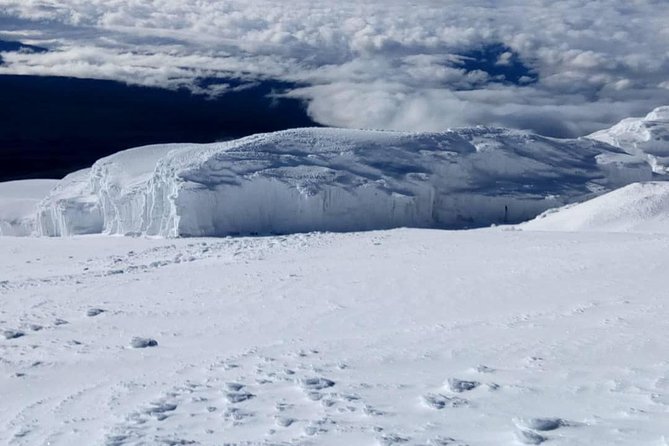
Preparing for the Kilimanjaro climb requires thoughtful packing and selection of essential gear. Climbers should pack lightweight, moisture-wicking base layers, insulating mid-layers, and weatherproof outer shells. Sturdy, broken-in hiking boots are a must, along with trekking poles for stability.
Other key items include a warm sleeping bag, headlamp, sunglasses, sun protection, and water bottles or hydration packs. While porters carry the bulk of the gear, climbers should pack a daypack with snacks, first-aid, and any personal medications.
Proper preparation ensures comfort and safety throughout the challenging ascent. With the right equipment, climbers can focus on the incredible journey ahead.
Frequently Asked Questions
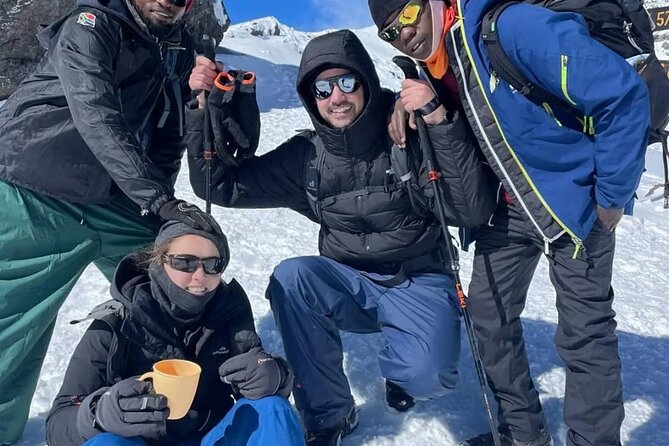
What Is the Best Time of Year to Climb Mt. Kilimanjaro?
The best time to climb Mt. Kilimanjaro is typically during the dry seasons – January to March and June to October. These periods offer the most favorable weather conditions and higher chances of successful summit attempts.
How Difficult Is the Lemosho Route Compared to Other Routes?
The Lemosho route is considered one of the more difficult routes up Mt. Kilimanjaro, with a higher elevation gain and longer duration compared to other options. It’s a challenging but rewarding path for experienced trekkers seeking a less crowded ascent.
Is It Possible to Arrange Airport Transfers Through the Tour Company?
The tour company doesn’t provide airport transfers directly, but they can arrange them for an additional cost. Travelers can request airport pickup when booking the tour to make their travel more convenient.
Can I Rent Gear From the Tour Company if I Don’t Have My Own?
Yes, the tour company offers gear rental services. They can provide the necessary equipment like hiking boots, backpacks, and jackets, so you don’t need to bring your own if you don’t have it.
What Is the Average Group Size for the Kilimanjaro Tours?
The average group size for Kilimanjaro tours is typically around 8-12 people. The tour operator offers a private tour option, allowing your group to participate without others. Group size may vary depending on the specific tour booked.
The Sum Up
Climbing Mount Kilimanjaro via the Lemosho Route is an exhilarating and rewarding adventure. The gradual ascent through diverse landscapes, guided by experienced professionals, enhances the chances of reaching the summit. The breathtaking panoramic views and sense of accomplishment at the top make this journey a truly memorable experience for adventurous hikers seeking a challenging yet remarkable mountain expedition.
More Tour Reviews in Moshi
Not for you? Here's more nearby things to do in Moshi we have reviewed
- Day Trip To Tarangire National Park
- Mountain Kilimanjaro Climbing 6 Days Machame Route
- 6 Days Rongai Route Climbing Mt.Kilimanjaro
- 7-Day Kilimanjaro Climb Machame Route
- 7-Days Tour Mount Kilimanjaro Trekking via Machame Route
- Kilimanjaro: Lemosho Route and Camping Safari
- 8 Days 7 Nights Private Lodge Safari
- 5 Days Comfort Safari in Tanzania
- 2 Days Lodge Safari.
- One Day Tanzania Safari – Tarangire or Arusha National Park
- Day Trip Lake Manyara
- Mt.kilimanjaro-machame Route
